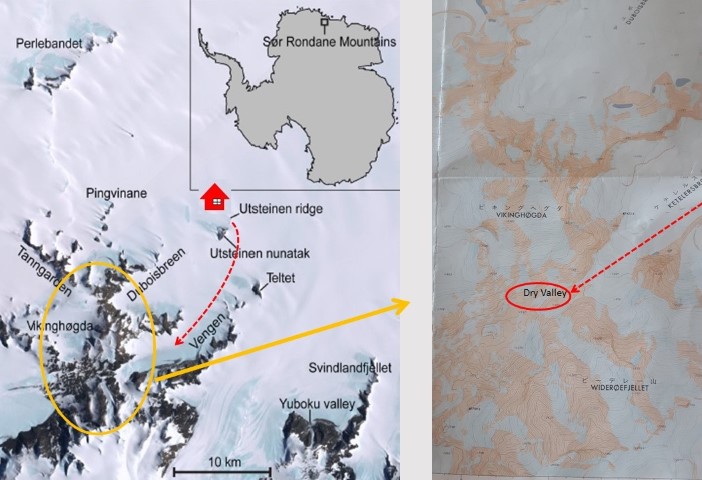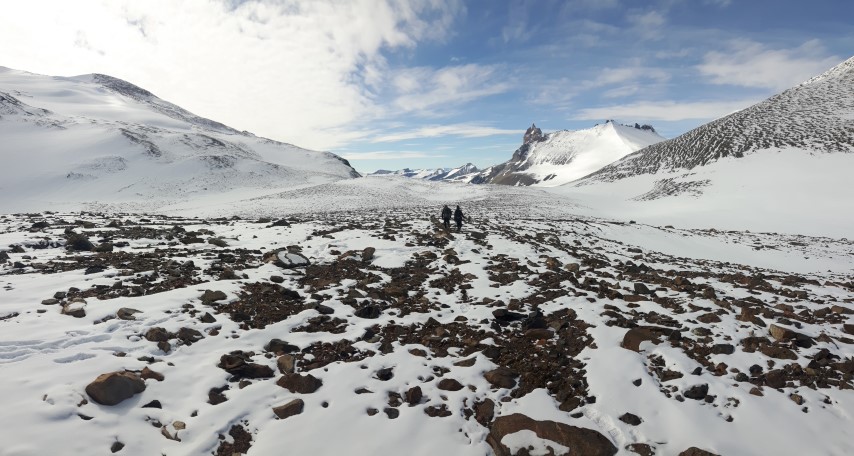|
After trying out the assembly of the two snow fences, we still needed to find the appropriate locations to install them. After visiting Perlebandet, it immediately became clear we would never be able to install one of the fences over there: none of the relatively flat spots was big enough and exposed to the right wind direction. Exposure to wind is important, because the mechanism behind the snow fences is that they will create a small windscoop, by acting as a miniature version of a mountain or nunatak. The wind becomes turbulent after the snow fence, resulting in the deposition of extra snow. We will install permanent sampling plots in the zone with increased snow cover (behind the snow fences) as well as in an area that is not affected by the installation. The latter plots will serve as control sites. Temperature, humidity and light loggers will allow us to compare the environmental conditions between the areas with increased snow cover and the control plots. Sampling of the permanent plots within a few years should enable us to make comparisons in microbial community structure.
After discussing with Gigi and Alain, Gigi suggested three potentially suited locations for installing one of the snow fences. One of them was the so-called Dry Valley between the Vikinghøgda mountain range and the highest mountain of the Sør Rondane mountains, Widerøefjellet. On Thursday we crossed the Ketelersbreen glacier, passing Mt Vengen on our left, and soon we found the right spot. The valley is actually the catchment of the Ketelersbreen glacier, and is a very wide, ice-free, relatively flat area. It is highly exposed to the dominant easterly winds: perfect for our experiment. After sampling the area for our study aimed at assessing the effect of microclimatic conditions and bedrock type on the microbial communities, we returned to the base and enjoyed a delicious meal, which was prepared by Thomas. He is the only remaining cook on the station, now that David left with Alain, Christian, Pierre and Jacques for a traverse to the coast. Their mission is to pick up the last remaining containers with the construction equipment for finalizing the building below the station. During dinner we were informed that the next 2 days will probably be white-out days, and hence with little to no visibility. Weather conditions force us to stay inside: two days at the office (with a view)!


|
